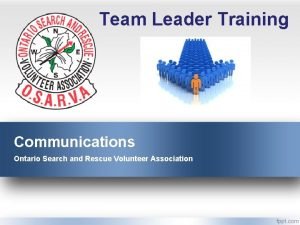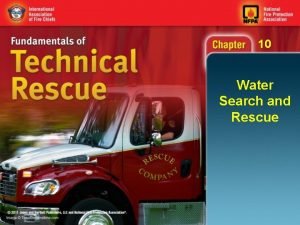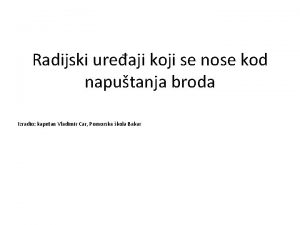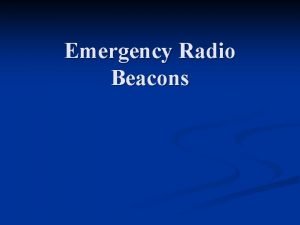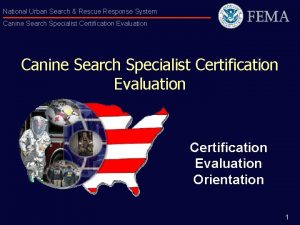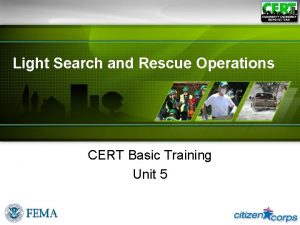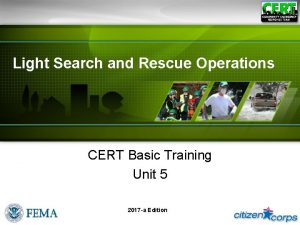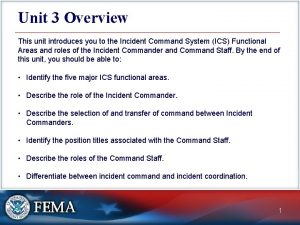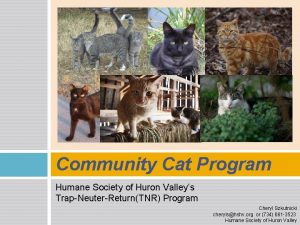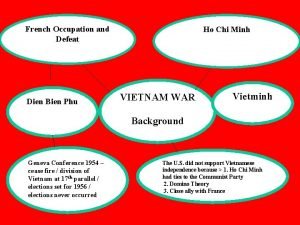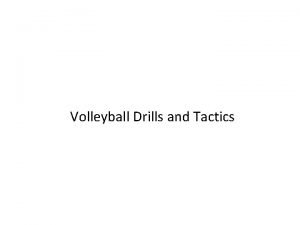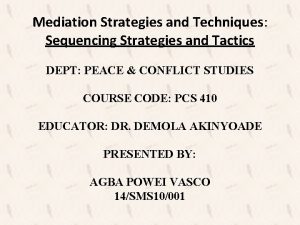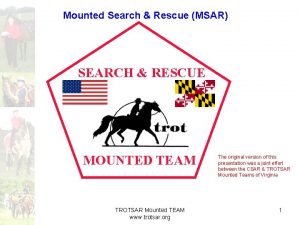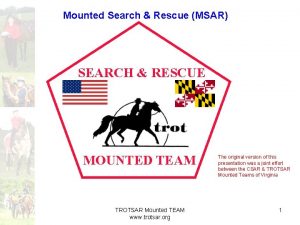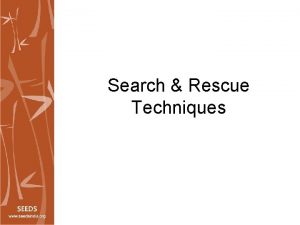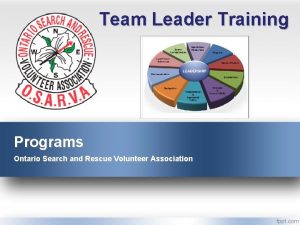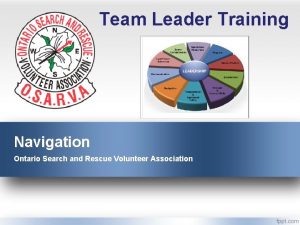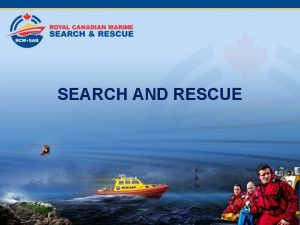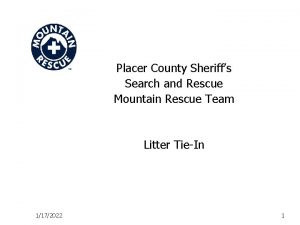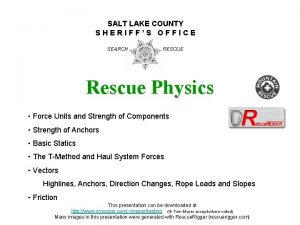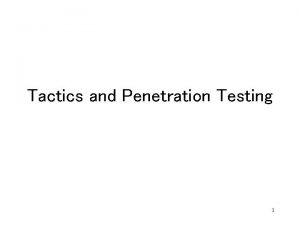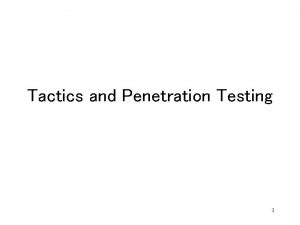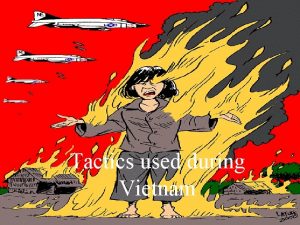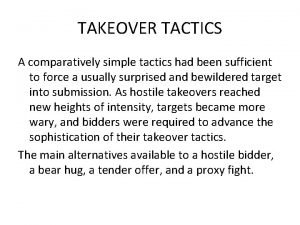Huron Area Search and Rescue Search Tactics Ontario























- Slides: 23

Huron Area Search and Rescue Search Tactics Ontario Search and Rescue Volunteer Association

Overview Ø Why Do We Search? Ø How Do We Search? Ø Search Positions Ø Search Patterns

Definition Search and Rescue (SAR) is defined as the combined activities and tasks involved in both searching for and rescuing persons who are feared to be in distress. Many searches do not involve rescue and many rescues do not require searches. Search - defined as, looking for an overdue, missing or lost person(s) whose location is unknown.

Why Do We Search? Ø To find a missing or lost person Ø Find clues related to a missing or lost person Ø Eliminate a search area Ø Advance the LKP (Last Known Position) Ø Give a clearer picture of what happened Ø Give a better idea of how someone may be found

How Do We Search? There are two types of initial response search methods: Ø Passive Method – Using attraction methods to assist in locating missing or lost person(s) Ø Active Method– Searchers actively searching for and/or containment the missing or lost person(s) or clues Several different resources may be used: Ø Ø Ø SAR Dogs Mountain Bikes ATV’s Snowmobile Boats Horses

How Do We Search? How a search should be searching: ØTravel a search area slowly, no more than half your normal speed. ØBe clue conscious; always be on the lookout for clues. Look up, down, left, right and all around. ØKeep focused on the task at hand; no phone calls, texting, picking berries, idle chit chat. ØUse all your senses ØStop periodically and listen; look behind you ØMaintain a positive outlook ØNever assume anything ØUse sound attraction ØKnow your limitations and convey that to your Team Leader

Search Positions ØTeam Leader ØFlag Person ØCommunicator ØNavigator ØMedic/Dedicated First Aider ØNote Taker ØSearcher ØPacer

Search Patterns The following are the different types of search patterns and techniques utilized: Ø Ø Ø Ø Ø Grid Search Hasty Search Track Crawl Binary Search Contour Search Perimeter Search Purposeful Wandering Attraction Methods (sound/visual) Confinement Methods

Grid Search Definition of grid - a network of horizontal and perpendicular lines, uniformly spaced, for locating points on a map, chart, or aerial photography by means of a system of coordinates. Ø Grid search is used when the initial quick response search has been unsuccessful Ø Grid Search is usually used as a last resort due to the number of people required Ø Used for a small area where the Probability of Detection (POD) needs to be high

Grid Search

Hasty Search Ø Also known as sweep search, or an open grid search Ø Used when a search area must be covered quickly and by a minimum number of searchers Ø Used to find responsive of highly visible targets Ø Team will normally consist of 3 persons a. Team leader/navigator b. 2 searchers

Hasty Search

Track Crawl Ø Consists of 3 to 5 searchers Ø Utilized when following a man-made feature (i. e. road, path, or trail) Ø Searchers will line up and follow this man-made feature, or clue which indicates direction of travel Ø Spacing of the team members will be determined by the team leader

Track Crawl

Binary Search • The binary search technique is the most efficient in terms of limited resources. It also utilizes sign cutting. From the LKP or PLS of the missing or lost person(s), clue conscious searchers make sweeps ahead through the probable search area trying to detect some clues that the missing or lost person(s) may be in the area. • If a clue is detected, large areas can be eliminated from the search and other searchers can now leap frog ahead (points A and B) to try and intersect the missing or lost person(s). • The leap frogging searchers may not intersect the subject but may find more clues which will again allow other searchers to leap frog ahead of them (points D and C).

Binary Search

Contour Search

Perimeter Search The purpose of performing a perimeter search is to determine if the missing or lost person(s) has left and/or re-entered the search area. There is no reason to search an area if there is no person in it. The diameter of the search or containment area will be determined by the search manager and command post based on: • Age • Physical condition • Weather • Ailments • Knowledge of the bush • History • Preparedness • Number of hours passed • Statistics, behavior and characteristics of missing or lost persons

Perimeter Search

Purposeful Wandering • Used to cover larger area in less time • Can use anywhere from 4 - as many searchers as you would like • This search pattern is to allow the searcher to wander back and forth while moving forward following a bearing • Spacing should be 20 -30 m apart • Can be used to create a up-to-date map of the area

Purposeful Wandering

Confinement Methods Confinement methods are implemented along the search perimeter to ensure the missing or lost person(s) does not leave the search area undetected. Confinement of the search area must be continuously monitored 24 hours a day once the perimeter has been established. Some confinement methods include: • Road Block • Trail Block • Camp Ins • Look-Out Post • Listening Post • Hip Chain • Track Trap

Questions
 Ontario search and rescue volunteer association
Ontario search and rescue volunteer association Reach throw wade row swim tow
Reach throw wade row swim tow Epirb uređaj
Epirb uređaj Beacon
Beacon Urban search and rescue markings
Urban search and rescue markings Light search and rescue operations
Light search and rescue operations Image search
Image search Pierce county search and rescue
Pierce county search and rescue The deputy incident commander will be replacing
The deputy incident commander will be replacing Huron heights guidance
Huron heights guidance Huron creek developments
Huron creek developments Huron course selection
Huron course selection Huron valley human society
Huron valley human society Ucf huron
Ucf huron Bailarina es una palabra aguda grave o esdrujula
Bailarina es una palabra aguda grave o esdrujula Port huron statement
Port huron statement Reach huron
Reach huron Huron irb ucf
Huron irb ucf A key part of backstabbing as a political tactic is to
A key part of backstabbing as a political tactic is to Volleyball tipping drills
Volleyball tipping drills Function of public relations
Function of public relations Sequencing strategies and tactics
Sequencing strategies and tactics Layered pattern
Layered pattern Managerial economics applications strategy and tactics
Managerial economics applications strategy and tactics
